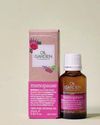Youve heard about the superfood powers of chia and blueberries but, lurking in the vegetable aisle of the supermarket and a staple of the common vegie patch, the humble leafy green remains a less applauded superfood. So lets turn over a new leaf to discover what benefits lie beneath.

Consumed by humans throughout history and maligned by salad-haters as “rabbit food”, leafy greens include some of the easiest-to-grow, most nutrient-dense yet inexpensive health foods on the planet. Consisting of the edible leaves of plants, these inauspicious wonder foods may also include the shoots (as in sprouts and micro-greens) and stalks (as in celery) of plants.
Botanical diversity
Broadly speaking, leafy greens cover a diverse range of species, including cruciferous vegetables like kale, bok choy, Brussels sprouts, kohlrabi and cabbage, as well as lettuces, the leaves of the beet family and herbs such as fennel, fenugreek and coriander. Less known edible leafy greens include wild greens such as chickweed, purslane and dandelion, the tops of vegetables, the leaves of some flowers and root vegetables, water plants such as sea lettuce (Ulva lactuca) and those specific to other cultures — komatsuna (Japanese mustard spinach), lingaru (fiddlehead fern) and amaranth are just a few examples. Not all “greens” are actually green but may be purple, red or multi-coloured.
According to founder of Food Plants International, Bruce French, there are about 8000 plants with edible leaves across the planet. These include indigenous species, the obscure and neglected and the well known. French, a former agriculturist from Tasmania, has collated the biggest database of edible food plants in the world. He says we should do more to value and eat leaves, especially those native to our own country.
Up & coming supergreens
This story is from the Issue#177 edition of WellBeing.
Start your 7-day Magzter GOLD free trial to access thousands of curated premium stories, and 9,000+ magazines and newspapers.
Already a subscriber ? Sign In
This story is from the Issue#177 edition of WellBeing.
Start your 7-day Magzter GOLD free trial to access thousands of curated premium stories, and 9,000+ magazines and newspapers.
Already a subscriber? Sign In

YOGA FOR IMPERFECTION
Life is messy and we all make mistakes, but by embracing imperfection, we can begin to accept all parts of ourselves.

Creating the foundations of ritualist self-care
As a busy mum of a three-year-old and expecting another baby, finding time for self-care often feels like a luxury.

Are you doom spending?
If \"doom spending\" has become your go-to for coping with stress, you could be making withdrawals from not just your bank account, but your health too.

THE POWER OF music
Most of us enjoy music. But science shows music is central to being human and its effect on us is far more astonishing and impactful than we realise. Music is fundamental to life.

SYNTHETIC FOODS
Synthetic, or genetically modified, fake meats and the like attempt to mimic real meat in both looks, taste and texture. But how much do we really know about the production process and how do they affect the environment and our bodies?

Embracing the power of nature
Menopause is more than just a biological change, it represents a significant life stage that can present numerous challenges - from hot flushes and mood swings to fatigue and sleepless nights.

Jan Fran
From a young age, Jan Fran's deep curiosity and keen interest in social issues sparked her journey into the world of journalism. As an accomplished journalist, media commentator and broadcaster, Fran's passion for storytelling has always been driven by a desire to explore, question and shed light on the world around her.

Helping teen girls thrive
Statistics reveal that many more teen girls are struggling with mental health issues. What's going on with them? More importantly, what can we do to help them flourish?

Your ageing eyes
Your eyes work hard for you every waking minute. It is no surprise that how your eyes age will be determined by how you protect them. Eating the right foods can go along way towards ensuring that your eyes stay healthy for a lifetime.

The bottom line
During the Couid pandemic, we were shocked to see people fighting in supermarkets over toilet paper and to see empty shelves that had once held roll after roll. The reasons behind the run for toilet paper during this time reflect the unique place that it holds in our psyche and are deeply rooted in our history.